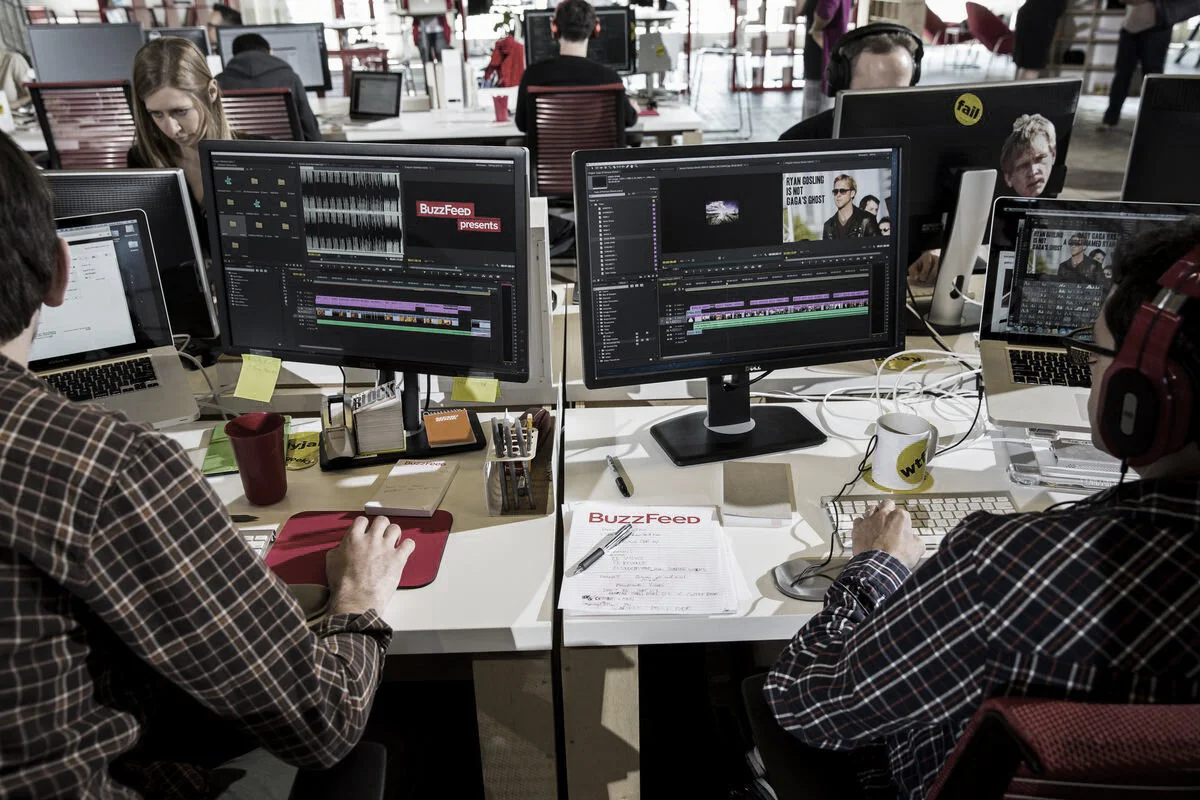Creating non-traditional viral videos for BuzzFeed Motion Pictures
When the manager of the LA office heard I had animation experience, I was given a new role to build and lead a team of animator/illustrators. Our mission was to create viral videos that explored feelings, stories and situations that were too difficult, time-consuming, or expensive to do in real life.
As soon as I was given this new role, I wanted to move fast. I looked for talented illustrator/animators who expressed a strong emotional point of view, but weren’t too stuck in a single style — creative people willing to try new things. To put together the team quickly, I turned to personal referrals, Dribble, and Behance to scout, recruit, interview, and hire two people. Within a few weeks I had a team. And, together, we figured out how to make videos in an entirely new format for BuzzFeed that were still shareable and relatable.
We leaned on the most successful video producers to help us learn the qualities that made videos go viral. And we experimented together and exchanging ideas.
Like the rest of the BuzzFeed Motion Pictures producers, we had to create at least one video per week, from concept to publication. Many times we were conceptualizing, writing or even illustrating multiple videos at at a time. The most important skills we developed we managing our time wisely, being realistic about the scope of our projects, and planning several weeks ahead to break down the work that would be needed.
why grand juries don’t indict cops when they kill (2014)
One of the videos I made at BuzzFeed Motion Pictures that I’m most proud of. Not only for its timeliness and relevance, but because of how I attempted to visualize what the author was saying about how cops and juries perceive young black men.
This video took longer than a week to create, as I coordinated with the author of the BuzzFeed article, who lived in New York, to record the voiceover, and drew the many illustrations in between the production of other animated videos I was working on.
My only hope is this video becomes more and more dated over time as racial biases recede.
what it’s like to feel lonely (2015)
My goal with this video was to find a way to visually express inner feelings of loneliness and the pressure of social validation — making it as universally relatable as possible by drawing a character that was as gender and racially neutral as possible. As of writing this caption, this video has 5.25M views on YouTube. But that’s not why I’m proud of it. I’m proud of how people related to it and the honesty that came out in the comments.
Generally, I watched the comment section for the first few hours, or day, after a video was published just to get a sense of how people were reacting, and whether I should create more videos like it.
But I kept going back to this video for a week or two. It felt really good to see how many people were relating to this non-binary, non-racial character and the feelings it expresses.
fat is not a feeling (2015)
This was an incredible collaboration with the author, who narrated and is shown in the video. She gave me unfiltered access into her childhood scrapbooks, while giving creative freedom to tell her story visually.
As a result, I chose to maintain the feeling of a scrapbook, or a teenager’s vision board, for this video.
The History of Denim in 96 sexy seconds (2014)
By most measures, this video was a flop. To date, it only has 365k views.
But I had two goals: Replicate Robert Brownjohn’s opening title sequence for “From Russia With Love.” And I wanted to make a video that was sexier than most BuzzFeed videos. (I couldn’t have cared less about the history of denim. And I think that’s why it flopped.)
After I published the video, a few colleagues said a more engaging title could’ve helped. Something like ”9 Facts About Denim You Wish You Knew.” Already sounds more BuzzFeed-y, right?
Either way, it was a fun experiment.
What It’s Like Inside The Ebola Bubble (2014)
This video was another collaboration with the reporter, who also recorded the voice over.
This video pre-dated the “Grand Juries” video above, and was the first time I used animated illustrations with photography to visualize the facts and feelings in the story.
Students Learn A Powerful Lesson About Privilege (2014)
This is one of the only videos I made where the illustrations were already done for me. They were a part of the original story as it was published in BuzzFeed. But the story was so simple yet powerful, that I wanted to expand its reach by animating the illustrations for a video.
I had to copy the style of the illustrations to create some of the in between sequences, but aside from that it was all animation.
